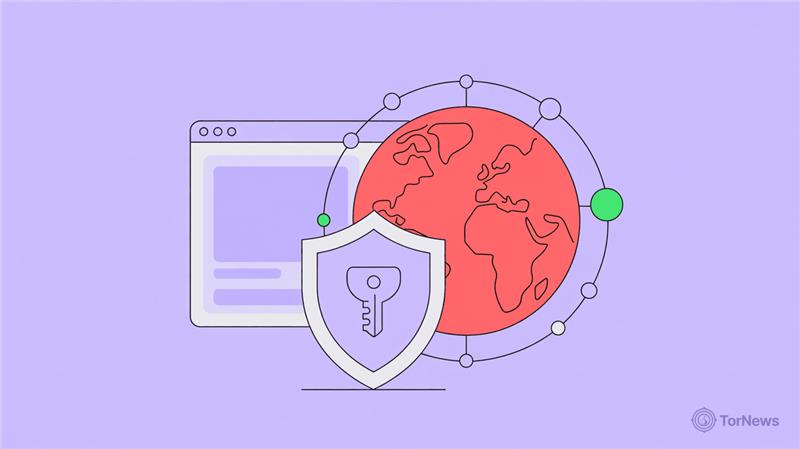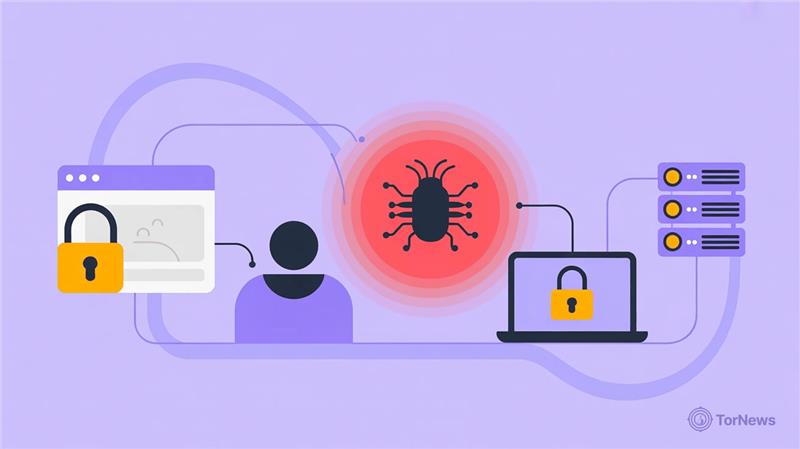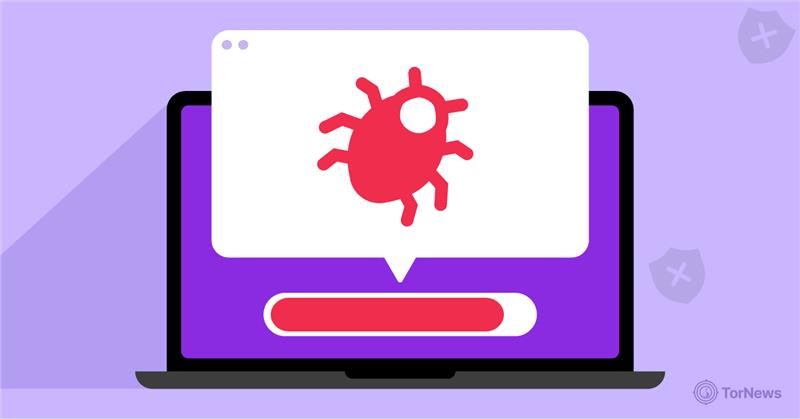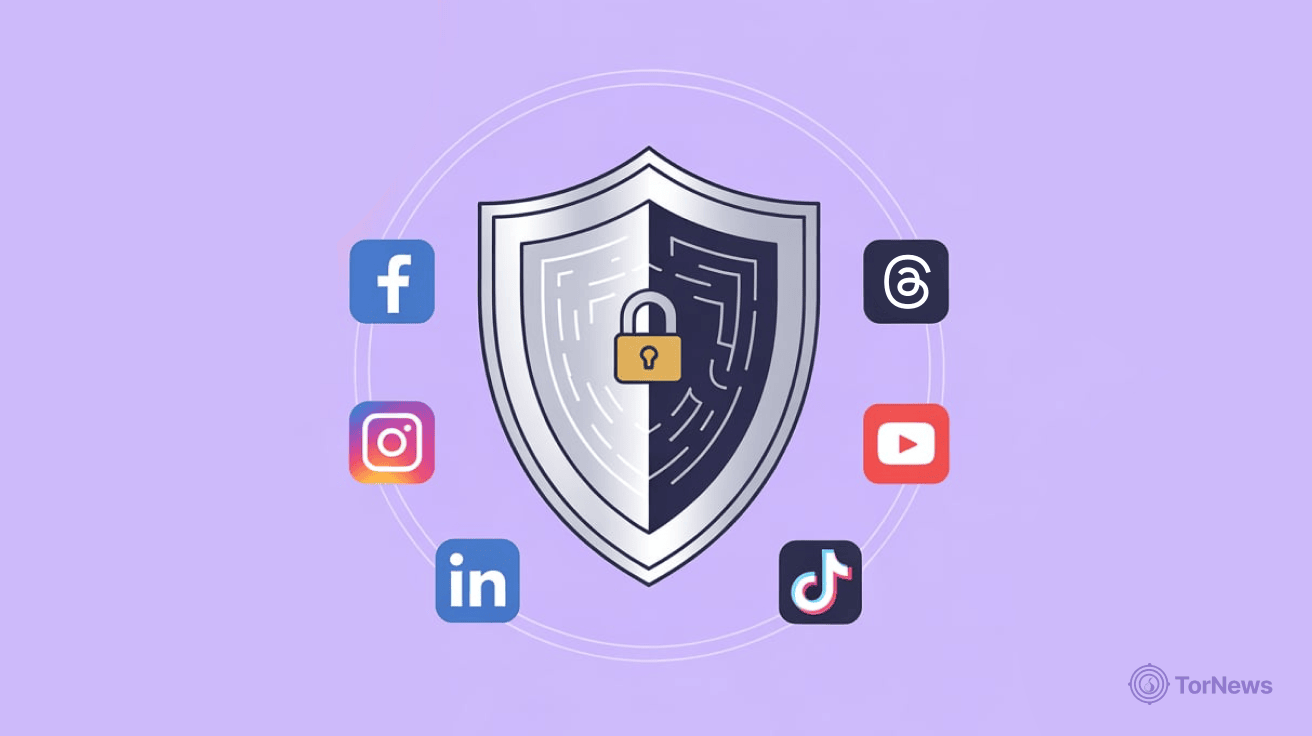With so many potential entry point opportunities to access things online, OSINT is that single but valuable skill that will assist you in combing through all the digital debris. If you are by nature a curious human, OSINT is the closest thing to super-sleuthing the digital age has to offer.
It is not hacking or accessing someone else’s systems. Rather, it is an intelligent method of using available public information. To keep it simple: OSINT is a process that involves searching for information through publicly available sources and then analyzing that information to create actionable intelligence. This is a core principle in cybersecurity.
For security professionals, OSINT is a core skill they will use to orient themselves within the threat landscape or develop a profile of a potential attacker. So what is Open Source Intelligence? It is simply the art of searching, sifting, and connecting the dots in an open web that is accessible to all. This is a powerful and often uncomfortable skill that anyone can apply in many ways, from solving crimes to protecting businesses.
What is Open Source Intelligence (OSINT) and How Does It Work?
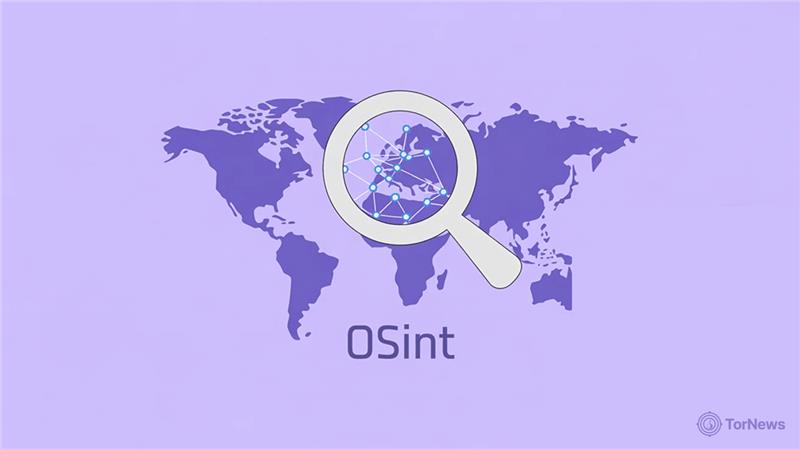
Open Source Intelligence (OSINT) is the research and analysis of information that is readily available on the open web. There are potentially a tremendous number of open sources: public records, social media, news media, forums, and even technical data.
The “open source” part of OSINT is critical; it indicates that the information is not classified, withheld, or otherwise private. It is information that anyone can find if they know where to look.
The OSINT process is an iterative cycle:
- Define the objective: What information are you trying to find?
- Gather the data: You are obtaining data from open sources that relates to your goal.
- Analyze the data: You are looking at all of the open source information, verifying the information, and looking for trends and themes.
- Develop the intelligence: You are turning the raw open source information into useful information – a conclusion, or report.
In the end, OSINT takes disparate pieces of public information and creates a cohesive story.
How Hackers Use OSINT

This is the ugly side of OSINT. Hackers utilize the same techniques for reconnaissance work and, in essence, have a roadmap to launch their attacks.
For them, OSINT in cybersecurity is a way to get a nice and complete picture of their target without ever getting their hands dirty. They can get everything they want from the open web, even before they launch their attack.
- Social media reconnaissance: A hacker can use social media to find out who works at the company, their title, and their interests. This provides a wealth of information to create personalized phishing emails.
- Physical reconnaissance: They can also find photos of the office building from social media posts. This can provide insight into the building’s physical security, including the types of keycard readers and security cameras in place at the company’s office.
- Technology stack reconnaissance: In no time at all, a hacker can learn what technology a business uses. For example, information about the applications a business uses is often available on the company’s website, even if it is somewhat hidden. This is useful information because it helps hackers triangulate vulnerabilities they can exploit.
- Phishing attacks: Once they have the names of employees and personal information, they can then build some very convincing phishing attacks. They could also have knowledge of what an employee’s favorite sports team is, or even where they went on their last vacation. This makes it much easier for them to trick the employee into using a link sent in their phishing attack.
- Password guessing: People do not protect their information well and will reuse passwords. Hackers may use OSINT to identify the username or email address of a user from one data breach, and then use that same username and password on other platforms.
- Targeting infrastructure: Hackers can find all the public records associated with a company, including the IP address and the domain names that the company owns. They can even find technical infrastructure information that provides a blueprint of a company for targeting.
How is Open Source Intelligence Used?

OSINT can be a bit of a double-edged sword. It is an effective tool for both good and bad actors alike. The same techniques that hackers use to uncover weaknesses, security practitioners use to mitigate them.
Let’s take a closer look at how the different side uses this intelligence.
Why Attackers Use OSINT
Attackers are always looking for a weakness, and OSINT is their first stop. They can do a ton of reconnaissance without ever having to touch your network. It’s a low-risk way for them to gather a ton of information.
- Information assessment: Attackers use OSINT to assess the level of intelligence they can gather from multiple sources, especially their targets. Social media posts, employee names, and contact information from LinkedIn, and public job post details about a company’s technology stack can all be gleaned. It all helps them with targeting personal data and assists them in planning a cyberattack.
- Launching attacks: After compiling all that personal information about an organization, an attacker can execute a very credible social engineering attack. An attacker could impersonate a colleague or vendor and convince an employee to click a malicious link that they send to that employee. An attacker only needs a marginal amount of confidence/information to convince you of their legitimacy.
- Finding weakness: Another way for attackers to gather OSINT is by monitoring public forums and news about known vulnerabilities in software and bug bounty programs. Such information helps an attacker choose the ideal target in your organization.
- Picking their targets: OSINT helps attackers find the juiciest targets. They’ll look for companies that seem to have a weak security posture or individuals who have a lot of valuable personal or financial information exposed online.
Why Defenders Use OSINT?

For defenders, OSINT acts as a preemptive, actionable tool. Rather than waiting for an attack to occur and then using OSINT methods to respond, they are able to use the same information to remain a step ahead of the attackers. Their goal is a stronger defense.
- Detecting threat: Defenders utilize OSINT as a discovery method to track what attackers are doing. They’ll stalk threat actor activities on online platforms, such as X (formerly Twitter), so they can stay on top of new threats, tactics, and tools. There is a very active OSINT defender community at X, and they’ve been sharing OSINT methods and resources to improve their cybersecurity practices at a faster rate than any security organization could.
- To identify a company’s digital footprint: A defender can use OSINT to access all of the information a company exposes to the public and can see what company data the public can access, whether private employee information, IP addresses, or even passwords in a data breach somewhere.
- Vulnerability control: In the same way attackers leverage OSINT to find information on publicly disclosed vulnerabilities, similarly, defenders do so. The latter can use OSINT to search mentions of their company name by scanning the dark web or searching online forums for content that could indicate a potential data leak. The difference is that defenders can use this information to prioritize patching and mitigation actions before an attacker exploits them.
- Incident analysis and response: If the absolute worst happens and a breach occurs at your organization, having OSINT available can be a lifesaver. Incident Response (IR) teams use OSINT to help provide valuable context, the breadth and depth of a breach, and piece together the puzzle of how a particular threat actor was able to infiltrate the organization’s systems.
- Social engineering and phishing sensitization: Organizations use OSINT to show employees exactly how much of their information is publicly available, helping them understand the risks of social engineering. This also helps to sensitize them in identifying major phishing threats that are based on real-world OSINT examples.
- To Verify a person’s identity: When scouting for new employees, a defender can use OSINT to vet a person and identify inconsistencies and determine their identity.
- Competitive leverage: In the business world, OSINT is also known as competitive intelligence. Various organizations have a constant eye on their rivals, market trends, etc. They all obviously have decided to leverage their intelligence gathering and monitoring of market forces publicly available and acquired knowledge.
At the end of the day, it’s a constant game of cat and mouse. While attackers look for a way in, defenders use the same generally available information to stick another brick in their wall. We view this as a constant digital game because information can be acquired on both sides, leveraging OSINT as an essential piece of their incident response playbook.
Why is OSINT Important?
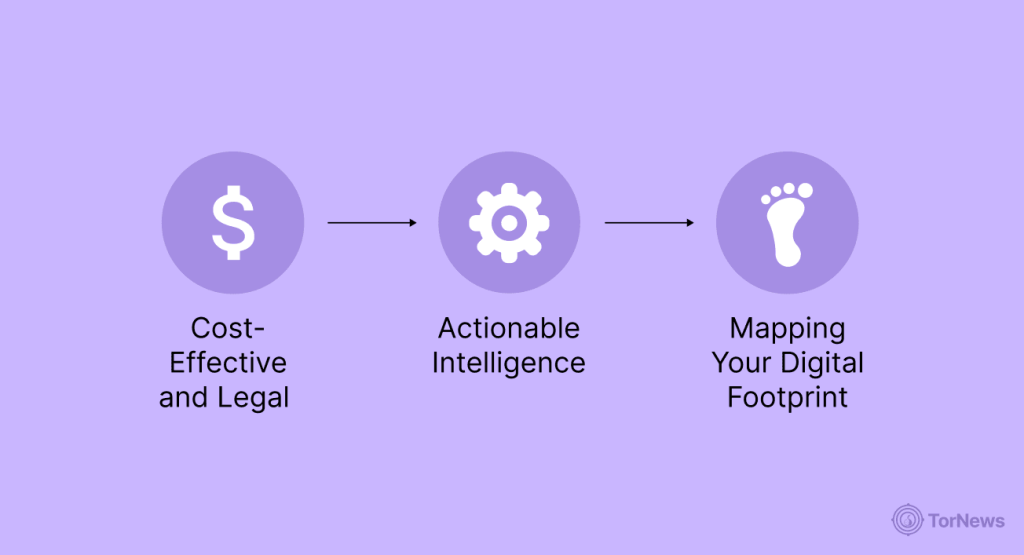
Let’s be real: the digital environment is a loud, messy place. For IT teams, keeping track of an entire world of information chaos is a full-time job, and that is exactly why OSINT is so important.
OSINT has become a foundational aspect of modern intelligence for one simple reason: the digital world has made it easy to get information. We have more access to data than we ever had, and so what is public is a goldmine for any individual who knows how to look.
Also, a solid OSINT strategy assists security professionals in accomplishing some major tasks, and there are a variety of tools to help them along the way.
Mapping Your Digital Footprint
One of the most frequent uses of an OSINT tool is to assist IT groups in identifying their own public-facing assets. Think of it as developing a digital map of your company from an outsider’s viewpoint.
The IT team’s job is to document the public information that a potential attacker could learn about your company without hacking anything. The team’s focus is not just to uncover any program vulnerabilities or penetration testing; it’s purely a collection of everything that is publicly available.
This could include anything from public IP addresses to domain registration information. This is the quintessential first step in identifying a potential attack surface.
Snooping Outside the Fence
Many of the best OSINT tools also have the ability to look for pertinent information outside of an organization’s defined network perimeter. This means sneaking around to see what sensitive data is leaking out into social media posts, public forums, or even on domains owned by a company you just acquired.
For organizations that are heavily engaged in a lot of mergers and acquisitions, such tools can definitely be a ‘lifesaver’. Considering how much information individuals post about themselves online today, looking outside the walls of your content organization’s perimeter and auditing for leaked or sensitive information is prudent for most companies.
Turning Data into Actionable Intelligence
One of the most powerful roles of the OSINT tools pertains to making sense of the chaos. When you run an OSINT scan on a large company, you can receive 100’s of thousands of returns, and that’s too much for a person to filter through.
These tools can help sort and group all that discovered information into something useful and actionable. These tools can assemble all that data, with the intention of recognizing the biggest issues first, and then the IT team can deal with the biggest concerns before someone can exploit them.
Cost-Effective and Legal
It’s a cost-effective way to gather information. There’s no need for expensive monitoring devices; you’re using the same tools as everyone else. And the best part, because the information is public, it’s completely legal.
The First Step in Any Investigation
Regardless of whether you are a good actor or a bad actor, OSINT is always your first step. You start with something that is public, and then follow your lead. It is foundational in any kind of serious investigation, whether in terms of criminal investigations or security assessments. =
Again, OSINT can provide valuable information and often almost immediately. You can take a piece of information and verify it quickly, or follow an event as it is happening. Speed in this regard is hugely important in our fast-paced world. Make sure you have someone who knows how to use these tools, and a great IT team that can immediately start work on patching.
The Dark Side of Open Source Intelligence
As discussed, OSINT has both good and bad sides, but its dark side is the major concern. Though OSINT tools and information are neutral and even useful, the intent behind their use can be extremely vicious.
This is why discussions of what is Open Source Intelligence have become an essential topic for modern security.
- Privacy invasion: The most significant issue is privacy invasion. Open source intelligence can provide information about individuals to create a comprehensive profile of their life, habits, and relationships. It is alarming how much a resourceful person can learn about you just by looking at your social media footprint.
- Social engineering: Attackers can utilize Open Source Intelligence for personalized attacks. They may discover your pet’s name, your mother’s maiden name, or your college, and use this knowledge to sidestep security questions or to build rapport in a fraud email.
- Stalking and harassment: Open source intelligence is also responsible for stalking and harassment. A malicious individual can leverage open source intelligence to identify someone’s location, determine their employer, and obtain information on their family and friends.
Open Source Intelligence Techniques

Now we get to the “meat and potatoes”. While OSINT is a concept, it also consists of precise and specific action steps. Analysts employ a number of open source intelligence techniques to locate the needed information.
So, let’s talk about some important techniques:
- Social media monitoring: This looks at various social media platforms to gather what people are saying, doing, and posting. For example, an analyst might follow a specific username or hashtag on multiple platforms and use that information to create a profile.
- Deep web search: This is not simply a search engine. Rather, this is the web that search engines don’t crawl. OSINT practitioners use this to find publicly available databases or academic sources that a standard Google search may not reveal.
- Metadata analysis: This is a vital technique. Metadata hides inside files. For example, a PDF or image can show who created it, when it was created, the software used, or even the geolocation where the picture was taken.
- Forum and blog research: Analysts can utilize forums and blogs to collect information on a specific individual or subject area. They could search for an individual’s username to see their previous postings, or they could find a community that discusses a specific vulnerability.
- Public records: Public records include court records, property records, census records, etc., that are easily available for the public. Public records are an excellent way to identify a person or find out what person may own a specified property or piece of land.
- Video and image analysis: Analysts will use their available tools to analyze videos and images found in open sources in order to identify clues about the location, person, or event. They may utilize displayed landmarks from a photograph to help identify a more accurate location.
- Geolocation: Analysts can use publicly available information, such as metadata from a photograph or check-in information on social media, to evaluate someone’s location or to identify the location of a photograph.
- Google dorking: Google dorking is a technique, instead of a tool. It involves using precise search queries to find hidden information on Google. For instance, an analyst would be able to search for site:example.com filetype:pdf to identify all PDF documents that reside on a website.
- Geospatial analysis: This involves analyzing maps, satellite imagery, and weather data to assess a specific location. It is a great way to keep up with events or monitor a specific area.
- Open source intelligence websites: There are many websites specifically designed for OSINT. Many times, they have a supply of data from multiple sources in a searchable area. You can think of them as an open-source search engine to locate public data.
- Cybersecurity research: This is essentially finding published information on threats, vulnerabilities, and attacks, and is a critical aspect of what constitutes OSINT in the cybersecurity field.
- Web scraping: This is the practice of using automated tools to pull data from specific webpages. It can be helpful in getting large amounts of publicly available data quickly, like gathering all the employee names from a company website.
- Email tracing: An analyst may find a person’s email address using OSINT tools and then trace the address to locate more information about them. Finding the email address can yield valuable information about the target, such as where they live, their social media profiles, or other associated public records.
- Domain name analysis: In this process, you examine a website’s domain name to discover who owns it, where it’s hosted, and what other sites they own. It is one of the best ways to find out who runs a sketchy website.
Open-Source Intelligence Methods
OSINT methods vary tremendously and often overlap. You can think of these as different methods to find a fragment of information.
- Human Intelligence (HUMINT): HUMINT is the acquisition of information through conversations, interviews, or observation. For example, some journalists might conduct an interview and then use OSINT information to verify the interviewee’s statements.
- Image Intelligence (IMINT): IMINT is the acquisition of information using images and videos in open sources. For example, IMINT can provide you with clues and information about a location, a person, or an event.
- Signal Intelligence (SIGINT): Normally, this is a clandestine method of acquiring information. However, OSINT includes using SIGINT from an open-source signal, such as a radio broadcast or an unsecured social media message.
- Measurement and Signature Intelligence (MASINT): MASINT is the analysis of the technical characteristics of a person or a device. With OSINT, investigators can discover how a company acquired a technology and identify the vulnerabilities that might exist in those cases.
- Geospatial Intelligence (GEOINT): GEOINT is the analysis of weather, maps, and satellite imagery. With GEOINT, you can analyze a location.
OSINT Framework and OSINT Tools List
Always ensure you have the right tools before getting started with OSINT. You can think of open-source intelligence tools and frameworks as an ecosystem of resources to help you be successful with your research.
The OSINT Framework is an excellent resource. The many OSINT tools are arranged by category on this web-based map. For those who wish to begin working in OSINT, it is an excellent resource. It allows the user to know exactly where they are seeking and organises things like social media tools, public data, and email lookups.
Here is a short list of some of the more popular OSINT tools that were referenced and are being used:
- Maltego: Powerful link analysis tool. It graphs data sources together and shows you how everything is connected.
- Shodan: Often referred to as the “search engine for the Internet of Things,” Shodan allows users to find publicly exposed internet-connected devices. It can be used to find your friendly neighborhood webcam, router, or server.
- theHarvester: You can use this straightforward tool to export email addresses, subdomains, and hostnames found on public sites.
- Google Dorks: This is not a tool, but a method. Based on searches with specific queries to discover hidden data in Google. For example, if searching for file types, simply use filetype:pdf to find all PDF files on a site.
Is OSINT Illegal?
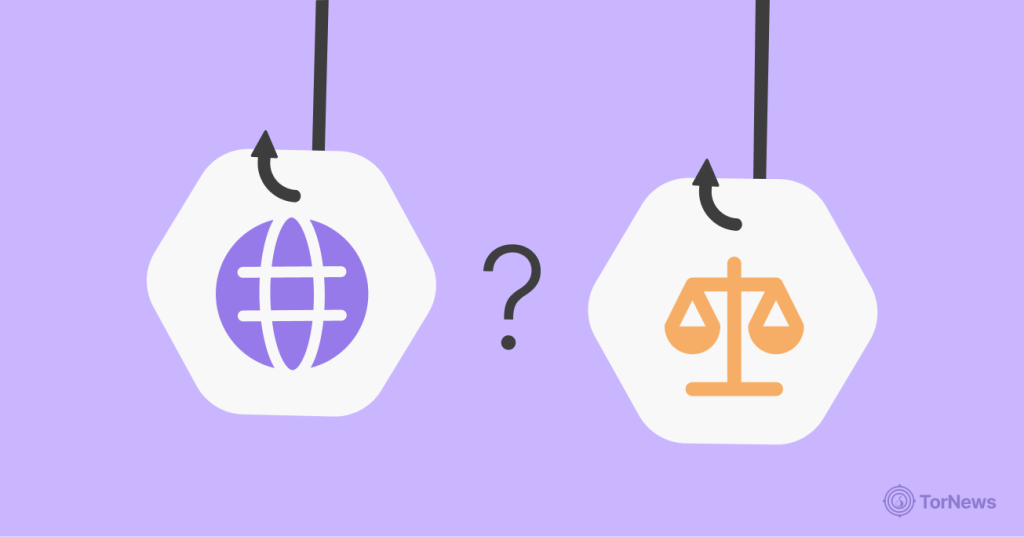
This is an important question. The short answer is: No, OSINT is legal. While bad and adversarial actors have hijacked OSINT methods for their own ends, the methods are perfectly legal on their part.
These methods are implemented as tools for the user to retrieve information from publicly available sources. Additionally, numerous corporations and government offices will consider leveraging OSINT methods for strengthening their cybersecurity against threat actors.
The primary reason is that it is publicity and publicly available information, to begin with. It’s no different than a journalist reading a news article and a security guard viewing what a public CCTV camera broadcasts.
There is nothing illegal about what you are seeing with OSINT. You are not looking at anything private or in a private system.
However, the line can start getting blurred quite quickly. This is where you can get into trouble:
- The misuse of data: The act of gathering information is permitted, but how you utilize that information can be illegal. For example, if you use the private information of an individual to stalk them, harass them, or impersonate them, that is illegal.
- Blurring the line between open and private: If you start using OSINT to get around a password, access a private social media account, or access a system to which you are not authorized, you have crossed from the realm of OSINT into illegal hacking.
That means the practice is legal, but you need to be careful in how you go about it and, most importantly, in what you do with the information you gather.
FAQs
Traditional intelligence is typically covert: human intelligence (HUMINT), signals intelligence (SIGINT), and classified information all come from covert sources. OSINT is open-source and public-domain. There are no secrets in OSINT, making it easier and accessible for a much larger group of people to exploit it as an intelligence source.
Yes, in theory. Most of the tools and almost all the information are publicly available. However, a good OSINT practitioner usually possesses a unique mindset. They are curious and patient, and have a better understanding of how to relate diverse information. OSINT, like all skills, takes practice to refine.
The biggest challenge associated with OSINT is information overload. There is so much information that it is easy to get lost or sidetracked. Another challenge is finding reliable sources – just because something appears on the Internet does not make it credible. A good OSINT analyst needs to be adept at verification.
OSINT is light-years away from HUMINT or Human Intelligence. It is not that they don’t share some common ground. However, OSINT is information that is accessible to the public via the internet. On the other hand, HUMINT is strictly gathered from human sources such as informants, interviews, or interrogations. While both OSINT and HUMINT are intelligence pieces of work, they are considered separate disciplines.
Generally speaking, yes, but that all depends on your technique and whether you are breaking any laws. If the OSINT you are going to do is compliant and passive, then you are safe. That being said, one of the best things we recommend is having an effective VPN. This is smart for your privacy and ensures you are not exposing your IP address or location while conducting OSINT.
